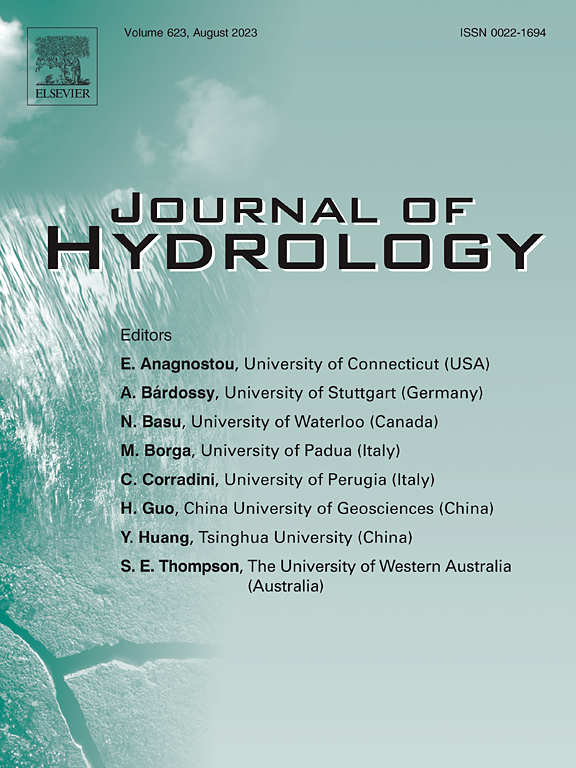小麦-玉米轮作系统中蒸发损失率与根系吸水率之间的二次关系
IF 5.9
1区 地球科学
Q1 ENGINEERING, CIVIL
引用次数: 0
摘要
本文章由计算机程序翻译,如有差异,请以英文原文为准。
Quadratic relationships between the evaporation loss fraction and the root water uptake ratio in a wheat-maize rotation system
Quantifying crop water uses and non-productive water loss under irrigation conditions plays an important role in the rational distribution of water resources. The hydrogen and oxygen stable isotope methods have been used in agricultural studies to quantify root water uptake (RWU) patterns and soil evaporation losses (f). However, their relationships and mechanisms are still unclear. In this study, we used the Bayesian stable isotope mixing (MixSIAR) model to quantify RWU patterns, and the Craig-Gordon model to quantify the evaporation loss of the winter wheat-summer maize rotation system under different irrigation conditions. Results of the MixSIAR model showed that 0–40 cm soil water was the main source of the two crops, contributing more than 50 % of soil water uptake. The crop water source changes were regulated by both root development and water availability, and this combined effect was enhanced by different irrigation treatments. The root water uptake ratio at 0–20 cm showed quadratic relationships with evaporation loss fraction. The f threshold point marks the breakpoint where root water uptake is affected by relative humidity or soil water content. The variation in f between wheat and maize is related to the physiological regulation of water in different species. It could be used to monitor plant water deficit status, and to distinguish root-distribution-dependent and soil–water-availability-dependent root water uptake patterns. Our research investigates the mechanisms behind changes in crop water use patterns, which will aid in developing more rational crop rotation systems.
求助全文
通过发布文献求助,成功后即可免费获取论文全文。
去求助
来源期刊

Journal of Hydrology
地学-地球科学综合
CiteScore
11.00
自引率
12.50%
发文量
1309
审稿时长
7.5 months
期刊介绍:
The Journal of Hydrology publishes original research papers and comprehensive reviews in all the subfields of the hydrological sciences including water based management and policy issues that impact on economics and society. These comprise, but are not limited to the physical, chemical, biogeochemical, stochastic and systems aspects of surface and groundwater hydrology, hydrometeorology and hydrogeology. Relevant topics incorporating the insights and methodologies of disciplines such as climatology, water resource systems, hydraulics, agrohydrology, geomorphology, soil science, instrumentation and remote sensing, civil and environmental engineering are included. Social science perspectives on hydrological problems such as resource and ecological economics, environmental sociology, psychology and behavioural science, management and policy analysis are also invited. Multi-and interdisciplinary analyses of hydrological problems are within scope. The science published in the Journal of Hydrology is relevant to catchment scales rather than exclusively to a local scale or site.
 求助内容:
求助内容: 应助结果提醒方式:
应助结果提醒方式:


